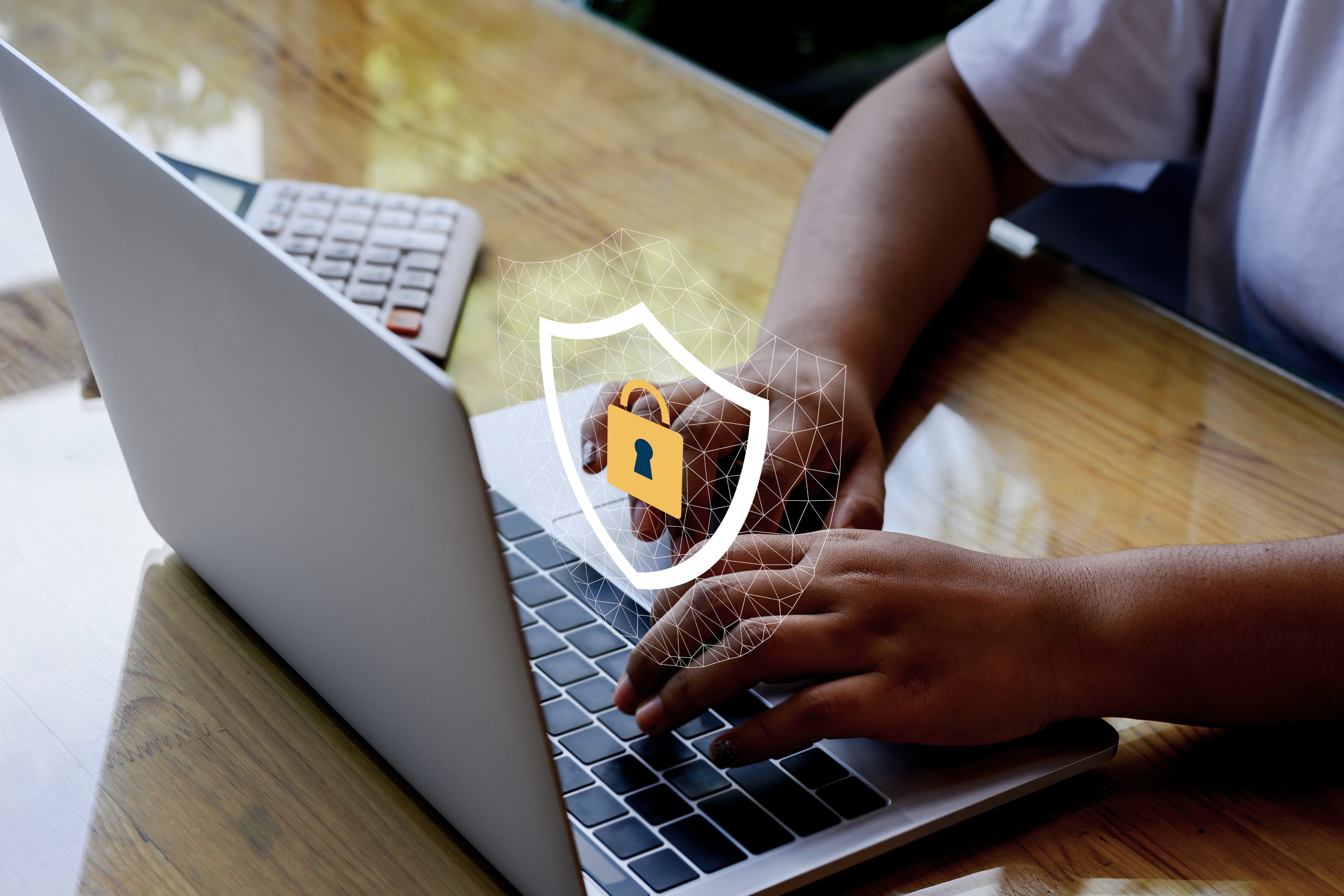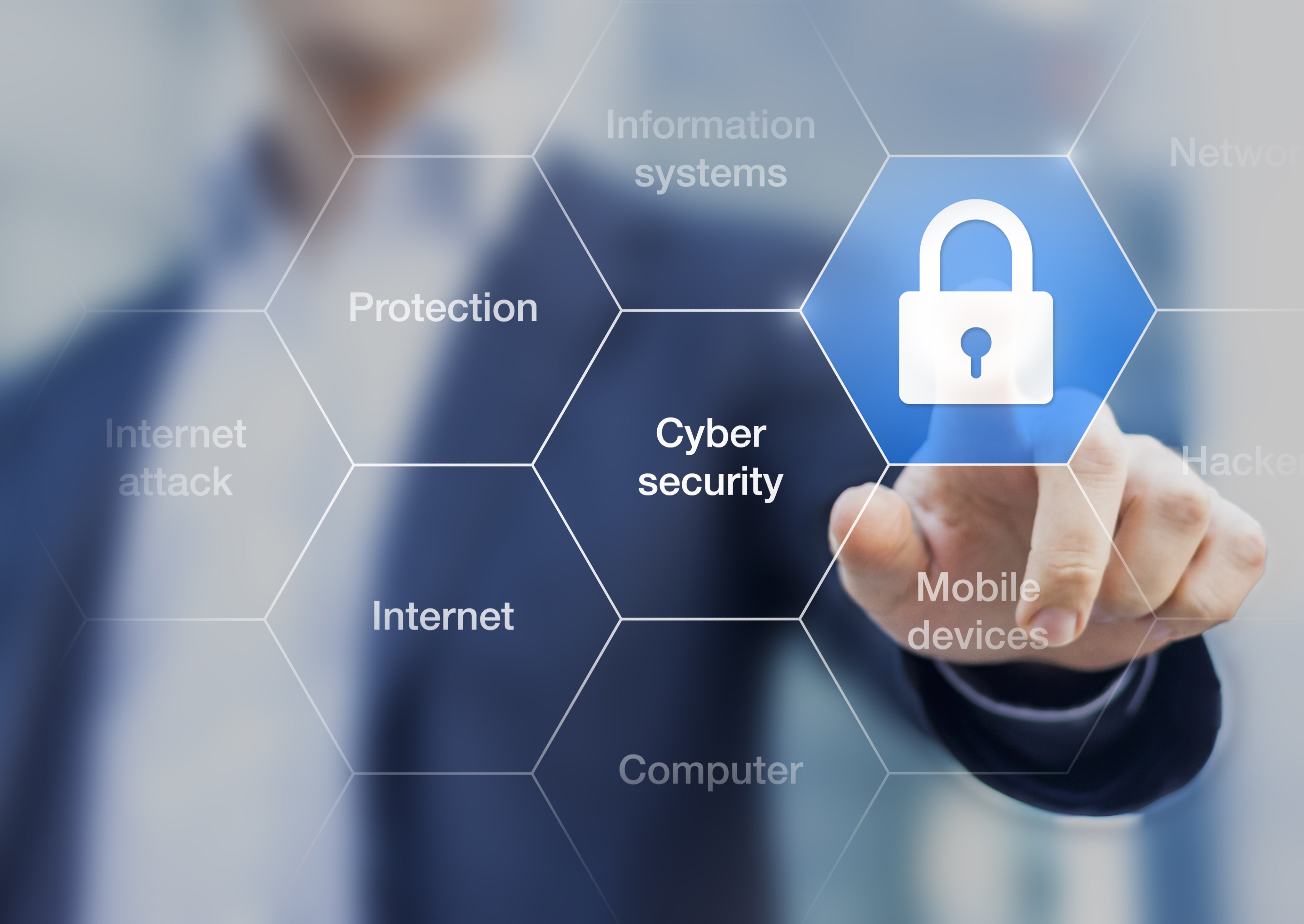Learn What You Can Do to Protect Your Business From Cyber Attacks
Cyber attacks can be deadly for a business. As the digital age evolves, the threat of data breaches becomes more significant. During the pandemic, many businesses had to move their practices online to accommodate remote and virtual working. This meant moving many files, data, and physical documents into digital storage, which are treasure troves of information for attackers to steal.
Anything can be stolen by someone determined to steal it and many business owners worry about losing client trust if their data security should ever be breached. Common targets of cyber attacks include email addresses, personal information like security numbers, phone numbers, financial information such as credit card details, or contracts. The global annual cost of cybercrime reached around $6 trillion in 2021 and the average cost of a data breach is around £3.86 million. We're guessing you don't have that kind of money in your back pocket.
The 2020 Verizon Report found that 86% of global data breaches were financially motivated which means that if you are the target of a successful cyber security attack on your digital information, then not only will you lose client trust and possibly revenue, but the criminals will benefit financially from your misfortune. This is why businesses must find a way to maintain their cyber security and reduce cyber risks to avoid the monumental cost of a breach.
Cyber attacks can cause damage to your systems, revenues, and reputation and while the first two may be recoverable in time, your company's reputation may not be so easily repaired. While cybercrime is an ongoing threat, there are ways of ensuring that your business is as protected as possible from data security risks. In our guide, we discuss exactly what cyber threats are, their various types, and strategies to help you prevent cyber attacks.
What Is a Cyber Attack?
So, what precisely is a cyber attack? It’s a deliberate attempt, whether successful or not, to exploit a weakness in business systems or networks. The attack threatens to destroy, disable, steal, alter or gain access to information (often sensitive or confidential information), and they can be carried out against an individual or an organisation.
Unfortunately, cyber attacks are becoming more and more sophisticated as well as frequent. The majority of companies have links between their servers, routers, access points and software tools to streamline workflows, so all it takes is one employee to click on a malicious link and the attackers can potentially gain access to the network and infect all your systems.
Types Of Cyber Attacks
To make matters even more complicated, there are several different types of cyber attacks. We’ve outlined and explained five of the most common types of cyber threats below.
Phishing
These are probably the most common type of cyber attack and involve sending mass amounts of fraudulent emails, texts, or social media messages to unsuspecting users, disguised as correspondence from a reliable source. They often have the appearance of being legitimate, but link the recipient to malicious files, or programs that grant access to gather and extract information. In extreme circumstances, they may introduce some malicious malware that can gain control of the system.
Malware
Malware comes in many forms and is the umbrella term for various types of programs including viruses, spyware, trojans, worms (not the sort you need medication for), and ransomware. When a user clicks on a dangerous link or email attachment, malicious software is installed inside the system. Malware can deny access to critical components of the network, disrupt the system, and even make it inoperable and obtain information from the hard drive. Phishing usually works in conjunction with malware as the phishing scam delivers content that aims to convince a user to install the malware under false pretences.
Man-in-the-Middle (MITM)
A lesser-known type of cyber attack, MITM occurs when an attacker intercepts a two-party transaction. These exploit a vulnerability in a network, such as an unsecured public Wi-Fi connection, and attackers insert themselves in between the network and a visitor’s device. This kind of attack is very difficult to detect as it's near impossible for users to discover that their information isn’t going to a legitimate destination. This is one reason why using a secure Wi-Fi connection is so important across all your devices, not just company assets.
Denial-of-Service
Attackers flood systems, servers, or networks with an absurd amount of internet traffic and digital information to try and overload bandwidth and resources, which cripples the system. Legitimate requests are then no longer able to process or fulfil their purpose, and the system can be taken completely offline.
SQL Injections
Structured Query Language attacks, or SQL, is where malicious code is inserted into a server, forcing it to reveal sensitive information. This kind of attack can happen by an attacker simply submitting malicious code into a vulnerable website’s search box.
Five Ways to Protect Against Cybersecurity Threats
Now you know what you’re fighting against, it’s time to equip your business network with the right armour. To keep your information and data safe, we’ve outlined our top five methods of protecting your business against cybersecurity threats.

Passwords
The easiest and perhaps most obvious form of protection for your data is ensuring you and your employees have strong, regularly changed passwords. It’s common for people to have the same password for everything, especially when they have multiple accounts, and it can be difficult to remember a different password for each. However, this is dangerous, as once an attacker cracks a password, they will have instant access to a variety of information from across all your accounts.
You should ensure that each account in your business has a different password and that these are regularly changed. It's best to make this a routine thing for everyone in the company to adhere to. Best practice may be setting a reminder for every employee to change their login details every three months. Using numbers, special characters and a random combination of letters will make your password more secure and help you to create a strong password that is not easily guessed.
However, all these efforts will be useless if you then write down your passwords or store them somewhere that is not secure. Many corporations use a secure third-party password manager to help them log into accounts quickly and to keep their passwords safe through multi-factor authentication. A password manager will be a trusted browser plugin that securely remembers your login details for every account you use, and auto-fills them without showing them to the user.
These programs are used to safely store passwords and login information because the data they contain is encrypted and they are required to check every few days that it is still you accessing these accounts. They do this through checking a variety of your details (which can't be auto-filled) and sometimes also using an external authenticator app that rotates security codes every few seconds. This is what is known as multi-factor authentication and is the safest way of storing passwords, if store them you must. A post-it note on your desktop frame is certainly not a secure method of keeping your passwords handy. This isn't the 80s.
Access Management
With remote working, accounts and systems can now be installed on any device, anywhere in the country or world. However, having business software installed on personal devices can increase the risks of compromising your systems. Ensure that employees only use business devices for their business-related tasks and set up accounts with admin rights so only verified people can access document storage or client portals where the majority of your sensitive data will likely be stored. Additionally, you should consider setting up admin rights on your network so that employees can’t access certain data without permission from senior management. This will boost your security and help to protect the most sensitive data you are responsible for.
Prioritise Your Antivirus Software
One of the most vital tools you have access to in preventing cyber attacks is the implementation of quality antiviral software which will actively search for and alert you to suspicious items on your system. It can also find common software vulnerabilities and help prevent cyber criminals from successfully gaining access to your company's sensitive information. Data protection is the responsibility of everyone in your company but with a good cyber threat protection program acting on your behalf, it does take a load off your mind.
Use A VPN
To further increase security when employees are working from home, using a Virtual Private Network (VPN) can help keep documents secure. These encrypt all information transmitted from employees’ devices to protect company data. Employees can use the VPN when they need to access work documents through a public Wi-Fi network to avoid cybersecurity threats. VPNs offer an extra layer of protection against hackers when users are not using your secure office internet connection.
Regularly Perform Software Updates
Cyber attackers are known for finding faults or vulnerabilities in a business’ network, server, or software. Regularly updating your software and computer systems can reduce the risk of a breach. Because cyber criminals do not launch an overt, brute force attack on your computer systems, the devil is inevitably in the details. Making sure all your tech stack of software and applications are running on the latest available versions will ensure their security is still being optimised and maintained by their providers. Older versions of software may not still be supported by the company that originally provided it. This can create gaps in your security for hackers to gain unauthorised access to your information.
Using document management software that has in-built security features will also provide an additional defence against your sensitive data and information becoming known to cyber criminals. While the old filing cabinets were none too secure, people felt reassured that there was an actual key, usually left in the keyhole, but still, it was there. Now your documents are usually stored online in a cloud or server-based software it's harder to see the layers of security around them, but if you use a trusted document management system then you can be assured that your virtual filing cabinet does not only have the metaphorical key removed from it and held by a semi-responsible adult but there are a team of digital guard dogs defending it too...metaphorically speaking.
Train Your Staff in Cyber Attack Prevention
To protect against cybersecurity threats, one of the most important ways you can increase the level of protection around your data is to train your staff on what to look out for. Keeping workers up to date with your company's current cyber security policies and keeping them in the know about the importance of GDPR is your number one cybersecurity solution. It can be easy to fall victim to a very sophisticated cyber scam or phishing attack, so it's vital that employees feel comfortable and confident enough to challenge or ask for help if they receive a suspicious email or phone call that doesn’t seem right or notice suspicious activity on the system.
Final Thoughts
Learning how to prevent cyber attacks can be a challenging prospect. However, it's certainly worth taking seriously as a security breach and a data leak could wind up costing you your business. Implementing a document management system that has inbuilt security is one way to put your mind at ease and prevent business cyber attacks. Virtual Cabinet's DMS offers excellent security for your documents and our unique encryption will reassure you that your data and information will remain in your hands and not those who would seek to monetise your misery.
Looking for a powerful, integrated document management system to improve your business's data protection? Then why not try a free demo of Virtual Cabinet's secure DMS today?
